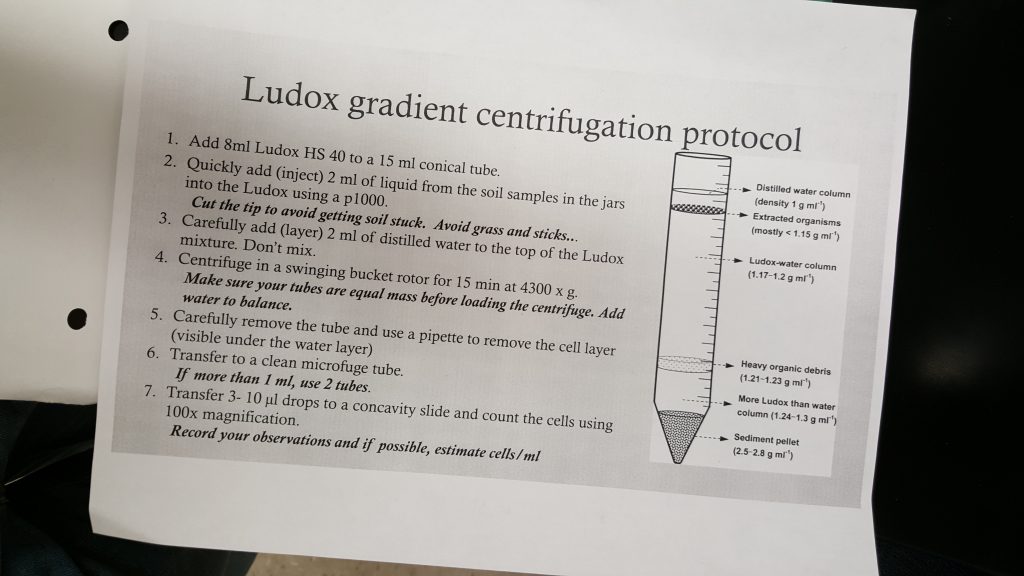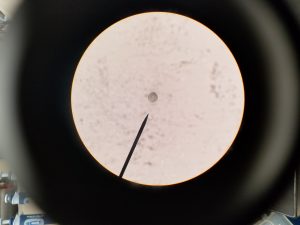2/1/2018
These are the basic procedures we use. However, we made some changes to them. The first difference is that we sifted our soil sample before adding water. This was done to minimize the ammount of large particles such as rocks and grass. Next, used 2.7 ml of liquid from the soil sample. Additionally, we added 0.3 ml of 2.5% Glutaraldehyde to the soil liquid before injecting it into the Ludox. This was done in order to try and prevent the cells in sample from disintegration during any of the following procedures, namely the centrifuagtion in Ludox. Steps 3 and 4 were carried out as printed. The remainder of the steps have yet to be completed.
The soil sample used was drawn from a mixture of 10 grams of soil and 20 ml of D.I. water. The mixture was placed on a vortex mixer for 5 minutes before the sample was taken. We allowed about one minute for the soil to settle before we drew our sample from near the top.
1/25/18
1/18/18
Group 1
- Challenges
- data varies greatly
- time and cost constraints
- used antibiotic surrogates to examine ecological health
- Application
- MOTU: molecular operational taxonomic unit
- APDP: amplicon pyrosequencing denoising program
- dbRDA
- TITAN: threshold indicator taxa analysis
Group 2:
- Purpose
- method of metaborcoding used to morphology
- Challenges
- distinguishing active and inactive cells
- interpretation of HTS
- Application
- extracellular DNA
- distinguishing living and dead cells
Group 3
- Purpose
- distribution through habitat types
- Challenges
- comparisons limited to a low sample number
- lack of standardization between studies
- Application
- distribution depends on habitat
Group 4
- Abstract: geographic separation in two distinct lineages
- Purpose
- geographic separation causes genetic variation
- chellenges
- hard to genetically characterize organisms
- application
- cox – 1 gene might work four our purposes
Group 6
- Purpose
- effects of soil and vegitation on protists
- Challeneges
- lack of protist specific primers
- most studies focus on DNA and not rRNA
- Application
- separately analyze ribosomal RNA and DNA
Group 7
- Purpose
- realize large diversity of soil parasites protists
Group 8
- Purpose
- wants to make universal Eukaryotic taxonomy database
- challenges
- no databases at the moment
- Application
- we could use UniEuk in our study
Isopycnic Centrifugation: Uses tiny glass particles to change the density of the centrifuge substrate
1/11/18
Metabarcoding: the combination of DNA taxonomy and high-throughput sequencing, as a tool for the rapid assessment and monitoring of biodiversity in mixed, bulk samples
How To Clasify
- Microscopic
- difficult to isolate
- many are morphological similar
- Molecular
- genomic diversity is unknown
- standard methods are not established
3 Ways to Extract DNA
- Single Isolate ID
- Metabarcoding
- Metagenomics







